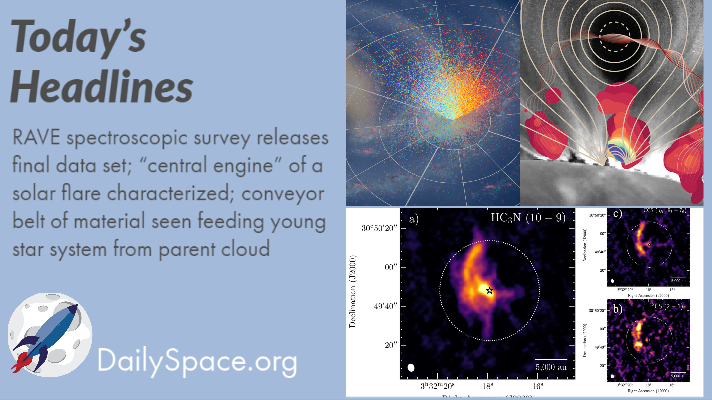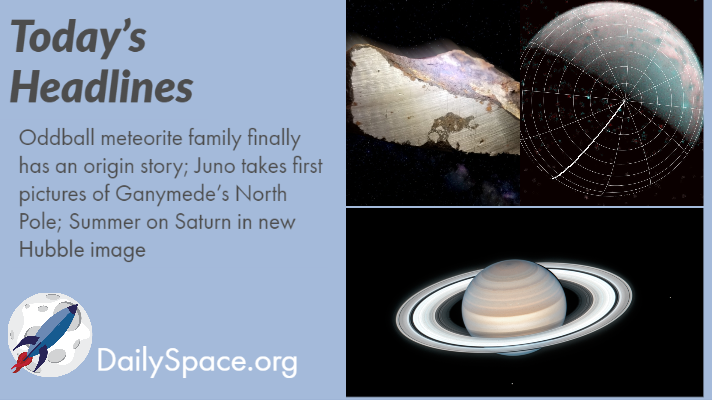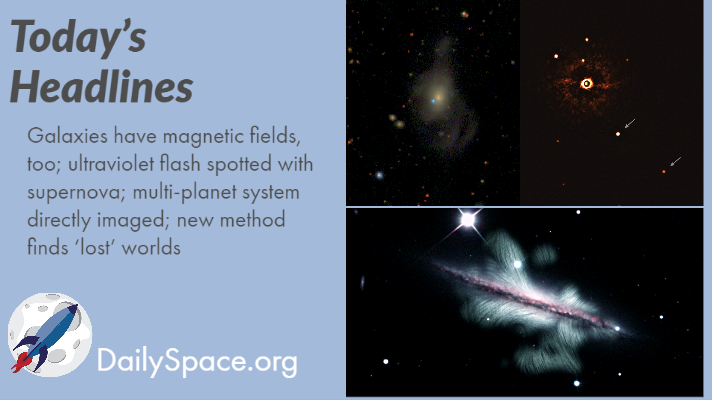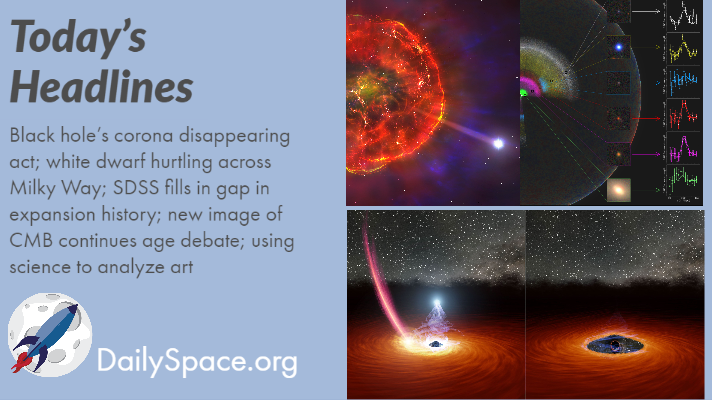
Jul 28, 2020 | Daily Space, Star Forming Region, Stars, The Sun
Join us today while we take a look at the final data set released by the RAVE spectroscopic survey of stars in the southern hemisphere. Also, scientists at Harvard’s CfA have characterized the “central engine” of a solar flare from our Sun. And finally, scientists in Europe observed a parent cloud feeding material to a pair of young stars.

Jul 27, 2020 | Daily Space, ESA, Jupiter, Our Solar System, Planets, Saturn
Join us today while we take a look at the new origin story for an oddball family of meteorites. Yes, like a comic book hero, the parent (body) is no more. Additionally, we are treated to new images: NASA’s Juno mission gives us Ganymede’s North Pole, and the Hubble Space Telescope presents summer at Saturn.

Jul 23, 2020 | Daily Space, Exoplanets, Galaxies, Supernovae, Very Large Array, White Dwarfs
Join us today as we learn that galaxies have magnetic fields, too. Also, scientists are excited to catch the ultraviolet flash of a type Ia supernova and directly image a multi-planet extrasolar system. Finally, researchers have developed a new method for finding “lost” worlds in NASA TESS data (but no dinosaurs, thankfully).

Jul 22, 2020 | Daily Space, Rockets, SpaceX
Join us for this week’s Rocket Roundup with host Annie Wilson as we look back at the launches that did and didn’t happen, including a bunch of suuuuuuuper secret satellites and one Hope-ful mission.

Jul 21, 2020 | Comets, Daily Space, Exoplanets, Venus
Join us today for exciting news that Venus still has active volcanoes! Also, mini-Neptune/super-Earth exoplanets are possibly irradiated ocean worlds, minus Kevin Costner. And we’ll talk about how to observe comet NEOWISE over the next few days as it climbs higher in the northern hemisphere’s night sky.

Jul 20, 2020 | Cosmology, Daily Space, Rockets, Supermassive Black Holes, White Dwarfs
Join us today as we examine one possible reason a black hole’s corona may have disappeared. Be on the lookout for a runaway white dwarf whose supernova sent it hurtling across the Milky Way. We take a look at new survey results that fill in an 11-billion-year gap in the expansion of the universe. A new image of the cosmic microwave background suggests the universe is 13.77 billion years old, give or take 40 million years. And as a fun bonus, scientists use celestial sleuthing on a Vermeer painting to determine when it was actually painted.








 We record most shows live, on Twitch. Follow us today to get alerts when we go live.
We record most shows live, on Twitch. Follow us today to get alerts when we go live.